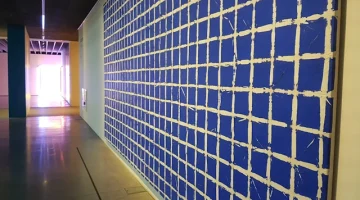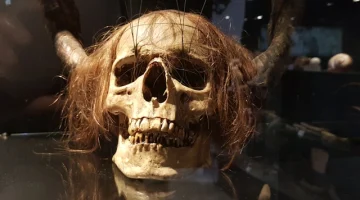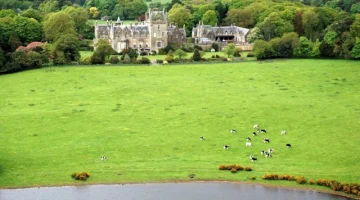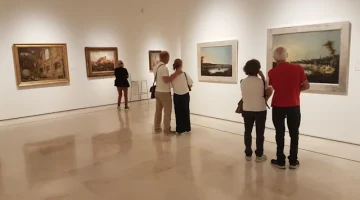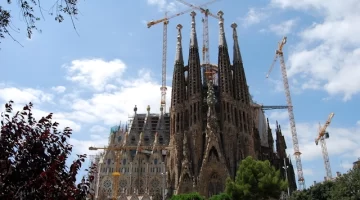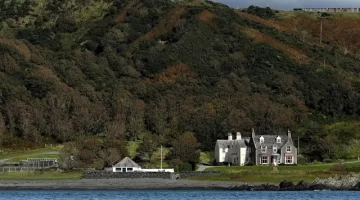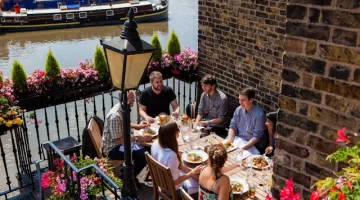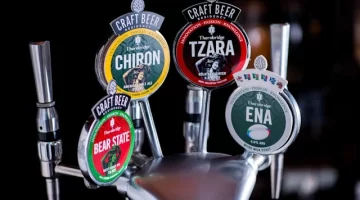On the Tunisian Frontier
Mike Gerrard visits a part of Tunisia that few tourists see, though more should, near the Tunisian border with Algeria.
The road sign by the roundabout in the middle of town points to the Algerian Frontier. This is Tunisia, where French is the second language, and the very word Frontière sounds exotic, with its suggestion of exploration and adventure, of new worlds. ‘Border’, on the other hand, just says ‘barrier’.
We are in the mountain town of Ain Draham, in western Tunisia. It isn’t totally unchartered territory, but it isn’t charter flight territory either. To get here we left behind the sophisticated chaos of Tunis, and first drove northwest to one of the most surprising sights in the country: Lake Ichkeul. Surprising because in this country that borders the Sahara, Ichkeul is a lake covering 23 sq miles and is one of only two UNESCO protected biosphere reserves in the world. The other is the Florida Everglades.

Ichkeul is the most important bird sanctuary in North Africa, providing a winter home for almost a quarter of a million waterbirds. However, on a hot afternoon in September we have to limit ourselves to a visit to the small museum and be content with the sight of a few stuffed ducks and eagles. More impressive are the dozens of water buffalo we see grazing in the reed beds, and other mammals here include porcupine, giant otter, foxes, jackals and wild boar.

Wild boar are common in the cork oak forests that surround Ain Draham, 60 miles west of Lake Ichkeul, where we hire a local guide named Yahia to take us for a walk in the woods. He wears a jaunty safari hat at a rakish angle, and is a wiry 52-year-old who lopes along in trainers, managing to move at great speed without appearing to expend any energy. He brings along his fox terrier, Osiris. We’re scarcely a minute into the walk, still in the dusty back streets of the town, when Yahia plucks a dandelion from the roadside and sings its praises to us. It’s a great source of Vitamin C, he says, and a valuable medicinal plant: ‘C’est une plante très intéressante.’
As we leave the houses behind it becomes clear that Yahia finds everything ‘très intéressante’, and so too does Osiris. Osiris chases cats while Yahia points out juniper trees and cherry trees, and tells us we can ask him questions on any subject but politics. On plant life he needs no asking. The flowers of the blackberry bush are very good for gum problems, he informs us, while a tablespoon of bramble jelly will help you see better at dawn and dusk. We walk on into the dense and shady cork oak woods, where Yahia points out the trunks partly stripped of their bark. Cork is one of the economic mainstays of this valley, 3000ft up in the Kroumirie Mountains on the Algerian border, where Tunisia’s last lions and leopards were shot a hundred years ago. Hunting is still a big attraction, as Yahia explains.

‘In winter we get the German visitors. They just want to shoot all day and drink all night.’ They pay good money, and there is no shortage of wild boar in the area. In fact, says Yahia, there will be one sleeping about 200 yards from where we have stopped.
‘They are mainly nocturnal. They don’t attack people except during the mating season or when one of them is hurt. Then you have to take care. But you should take a cigarette with you into the woods, as the boar don’t like the smoke.’
We stop in what could be an autumnal glade in an English woodland, where Yahia points out tiny golden mushrooms, scarcely bigger than a pin-head. There is a wild lavender plant too, and myrtle trees. We emerge from the wood in what could be the North Yorkshire Moors, a hillside covered in browning ferns. Fern Mountain, says Yahia, and at the top we get our first glimpse of Algeria, a few miles away. On the gentle slopes of a hill mirroring ours stands a village of square white houses. Yahia’s sister lives there, married to an Algerian man, and he goes to visit them almost every week.
As we walk down again and back into the bracken, we ask if there are any snakes around. ‘Just a few friendly ones,’ Yahia assures us. ‘The boars eat the rest.’

We continue driving south, hugging the Algerian border, till we see a sight that few visitors to Tunisia ever see… and which few people know anything about. Jugurtha’s Table is an astonishing flat-topped mountain whose sheer sides rise out of the surrounding plain to a height of 4170ft. It looks like a huge fountain of rock shooting straight to the heavens. A 2-hour walk from the nearest village, Kalaat Es Senam, takes you round the side of the mountain to the rear where, carved out of the rock face, is a series of stone steps, the only way up to the top of this vast landscape.

We haul our aching legs up, our expensive walking boots clumping on the stone, our lungs pounding. We stop for a break to catch our breath, and at that moment a Tunisian man approaches us on the downward path. He is at least 70, leaning on a stick to support his bad leg, and wearing a pair of carpet slippers. ‘You are walking too fast,’ he tells us. ‘Take it slowly. Of course these days I have to do it slowly because of my leg. I can’t get about like I used to.’

And with that he waves us cheerily on and we ascend, more slowly, to the top of this bizarre feature. The scenery here looks like the rugged American west with its mesas, and a bit like the moon. They film Star Wars in Tunisia, and if Jugurtha’s Table hasn’t featured yet it’s only because George Lucas hasn’t discovered it. It’s a secret other planet on the rocky top, which extends for miles in every direction. Sheep graze in the distance, like animals on the African plain. Thousands of white-shelled snails are clinging to the scraggy plants and bushes. A few well-fed wheatears flit among the rocks.

Without speaking, the three of us who have climbed up here all go our separate ways, overawed by the place, seeking some solitude to try to make sense of it all. Not that we could, as no-one knows the full story of this imposing plateau. Jugurtha was a Numidian king who dug in on the top of this mountain to resist the Romans for seven years in the 2nd century BC. It has since been the home of bandits and Byzantines. Crumbled ruins on top could be churches or mosques.
I climb over a wall into a courtyard, where pillars have fallen. I never fail to see a fallen pillar without imagining the crash as it thundered to the ground. In the centre of the courtyard stands a small pile of stones, with a flat-topped stone like a hat on the top. Arranged on this are a few coloured pebbles, looking very paganistic, like New Age worship in this age-old place.
I walk towards the edge of the plateau, jumping across fissures in the rock, as if the earth had tried to rip the Table apart but failed. I keep a respectful distance from the edge. The sky darkens in the distance, and thunder rumbles. The whole feeling is Biblical, apocalyptic. I expect a plague of frogs to start raining down. In front of me may be the frontier with another country, Algeria, but up above my head I feel a frontier with another world.
OUR TUNISIA GUIDE
This Travel Guide to Tunisia is by award-winning travel writer Mike Gerrard. The guide covers Tunis, Carthage, Sidi Bou Said, archaeological sites like Dougga, excursions to the Sahara Desert, and all the main Tunisian beach resorts and tourist towns.
Amazon 5-Star Reviews
‘Interesting information straight to the point and informative, I like the mix of tourist information and cultural knowledge and it is not a lengthy read, just enough to inform you about Tunisia.’
‘Very useful information including things to see and do and even how to avoid local pit falls good overview of all the areas.’
‘Very useful guide for visiting Tunisia and very good value for the money. I found the book to be very informative.’
Read more on Amazon or click on the cover.

